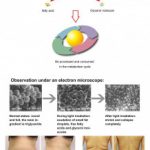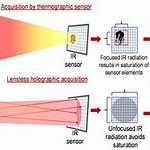Light therapy color meanings refer to the different wavelengths of light used in therapeutic treatments. Each color has a unique impact on the body and can help with various issues ranging from sleep disorders to depression. Light therapy is gaining more popularity as a natural way to treat and alleviate certain medical conditions. It is said that the right color therapy can help to balance the body’s energy, leading to a healthier and happier life. Understanding the meanings of different colors in light therapy is essential for anyone seeking this type of treatment.
Contents
The Science Behind Light Therapy
Light therapy is a non-invasive treatment that uses specific wavelengths of light to improve mood, sleep, and skin health. It works by stimulating the body’s natural healing mechanisms, promoting the production of new cells, and reducing inflammation. Light therapy is based on the principle of photobiomodulation, which is the process of using light to stimulate cellular activity.
The Role of Colors in Light Therapy
Colors play an essential role in light therapy, as each color has a unique wavelength that affects the body in different ways. Colors are classified into two categories: warm colors and cool colors. Warm colors, such as red and yellow, are associated with energy and stimulation, while cool colors, such as blue and green, are associated with relaxation and calmness.
Red Light Therapy
Red light therapy is a popular form of light therapy that uses red wavelengths to stimulate cellular activity. It is often used to improve skin health, reduce inflammation, and accelerate healing. Red light therapy is also used to treat conditions such as acne, rosacea, and psoriasis.
Blue Light Therapy
Blue light therapy is a form of light therapy that uses blue wavelengths to treat skin conditions such as acne and eczema. Blue light therapy works by killing the bacteria that cause acne and reducing inflammation in the skin.
Green Light Therapy
Green light therapy is a form of light therapy that uses green wavelengths to improve skin tone and reduce hyperpigmentation. Green light therapy is also used to improve lymphatic drainage and reduce swelling.
Yellow Light Therapy
Yellow light therapy is a form of light therapy that uses yellow wavelengths to improve skin texture and reduce the appearance of fine lines and wrinkles. Yellow light therapy is also used to improve circulation and reduce redness in the skin.
Purple Light Therapy
Purple light therapy is a form of light therapy that uses a combination of blue and red wavelengths to treat skin conditions such as acne and rosacea. Purple light therapy is also used to improve skin texture and reduce hyperpigmentation.
The Benefits of Light Therapy
Light therapy has numerous benefits, including improved mood, sleep, and skin health. It has been shown to be effective in treating a wide range of conditions, including depression, seasonal affective disorder, and skin conditions such as acne and eczema.
Improved Mood
Light therapy has been shown to be effective in treating depression and seasonal affective disorder (SAD). It works by stimulating the production of serotonin, a neurotransmitter that regulates mood.
Improved Sleep
Light therapy has also been shown to be effective in improving sleep quality. It works by regulating the body’s circadian rhythm, which is the internal clock that controls sleep and wakefulness.
Improved Skin Health
Light therapy has numerous benefits for skin health, including reducing inflammation, improving circulation, and stimulating the production of collagen, a protein that gives skin its elasticity.
FAQs – Light Therapy Color Meanings
What is light therapy?
Light therapy, also known as phototherapy, involves the use of specific colors of light to treat various medical conditions. This practice involves exposing the body to light using specialized light sources, such as light boxes, lamps, and lasers. The light emitted from these sources can improve mood, reduce inflammation, and even influence the body’s ability to heal.
How does light therapy work?
Light therapy is based on the idea that light can influence the body’s biological rhythms and processes. When exposed to certain colors of light, the body may respond by releasing hormones or other chemicals that affect mood, energy levels, and other health outcomes. For example, blue light can help regulate circadian rhythms and improve sleep, while red light can stimulate collagen production and improve skin health.
What are the different colors used in light therapy?
There are a variety of colors used in light therapy, each with its unique set of benefits. Some of the most common colors used in phototherapy include blue, red, yellow, green, and white. Each color is believed to have a different effect on the body and can be used to treat a variety of health conditions.
What are the meanings of different colors used in light therapy?
The meanings of different colors used in light therapy can vary depending on the specific practice or approach being used. In general, blue light is associated with calming and relaxation, while red light is associated with stimulation and energy. Yellow light is believed to promote feelings of warmth and comfort, while green light is associated with balance and harmony. White light is often used for general wellness purposes and can provide a range of benefits for body and mind.
What conditions can light therapy treat?
Light therapy can be used to treat a wide range of health conditions, including depression, seasonal affective disorder (SAD), sleep disorders, skin conditions, and pain management. Depending on the specific condition being treated, different colors and intensities of light may be used to achieve the best results.
How long does it take to see results from light therapy?
The length of time it takes to see results from light therapy can vary depending on the individual and the condition being treated. Some people may see improvements in mood, energy, or other symptoms after just a few sessions, while others may require several weeks or months of regular treatment to achieve significant results. It is important to follow the recommended treatment regimen for your specific condition and speak with your healthcare provider if you have any concerns or questions.







